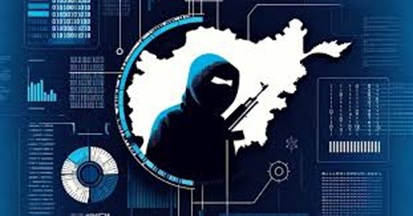Home »
Network Security Tutorial
Network Security - Advanced Persistent Threats (APTs)
By IncludeHelp Last updated : July 27, 2024
What Are APTs?
Advanced persistent threats, commonly referred to as APTs, are a type of cyber attack where an unauthorized user gains access to a network and remains undetected for an extended period. Unlike typical cyber attacks, APTs are carefully planned and executed, usually targeting specific organizations or countries for spying or stealing data.

Characteristics of APTs
Let's have a look at some common characteristics of APTs:
- APTs last for months or years, staying hidden while collecting sensitive information.
- They focus on specific organizations or countries, often for political or strategic reasons.
- These attacks are costly and typically carried out by well-funded groups.
- APTs involve multiple stages: research, deploying custom malware, avoiding detection, mapping the network, and stealing data gradually.
- They use sophisticated techniques, including social engineering and zero-day exploits.
- APTs bypass common security tools like antivirus software and firewalls.
- Signs of an APT include unusual user activities, increased database activity, large files with strange extensions, more backdoor trojan detections, and data being transferred out of the network.
How APTs Work?
- Initial Entry: Attackers often use phishing emails, malicious attachments, or exploiting vulnerabilities to gain access to the network.
- Establishing Foothold: Once inside, they install malware or create backdoors to ensure continued access.
- Escalation of Privileges: Attackers escalate their access privileges to move deeper into the network.
- Internal Reconnaissance: They explore the network to understand the structure, identify valuable data, and locate additional vulnerabilities.
- Data Exfiltration: Sensitive data is gradually collected and sent back to the attackers' servers.
- Maintaining Access: Attackers continuously work to maintain their presence and evade detection.
Examples of APTs
Example 1: Stuxnet
Stuxnet is one of the most well-known examples of an APT. Discovered in 2010, it targeted Iran's nuclear facilities. The malware specifically attacked programmable logic controllers (PLCs) to damage centrifuges used in uranium enrichment. It is widely believed to be the work of state-sponsored attackers from the United States and Israel.
Example 2: APT28 (Fancy Bear)
APT28, also known as Fancy Bear, is a cyber espionage group believed to be associated with the Russian government. This group has targeted government entities, military organizations, and media across Europe and North America. They are known for their sophisticated spear-phishing attacks and use of zero-day exploits.
Example 3: Operation Aurora
In 2009, Google and other major companies were targeted by a series of cyber attacks known as Operation Aurora. The attacks were traced back to China and aimed to steal intellectual property and access the Gmail accounts of Chinese human rights activists. The attackers exploited vulnerabilities in Internet Explorer to gain access to the networks.
Common measures to avoid ATP attack
- Implement two-factor authentication and require strong passwords to secure your network.
- Regularly patch systems and monitor network activity to maintain a secure perimeter.
- Require strong passwords and regular patching for all personal computers and mobile devices.
- Keep operating systems, applications, and tools up to date to protect against known threats.
- Restrict network and user access to only what is necessary and review access regularly.
- Use advanced endpoint protection with automatic updates to guard against threats.
- Encrypt all sensitive information, including data stored in the cloud.
- Regularly audit systems to spot unusual activity and close potential security gaps.
- Train staff on APTs, how to recognize attacks, and what to do if they notice something suspicious.
Advertisement
Advertisement